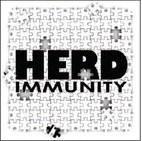OCHCA: COVID vaccines are key to herd immunity


The following op-ed is reprinted with permission from the Orange County Health Care Agency.
There has been much debate around the concept of herd immunity since the early stages of the COVID-19 pandemic. As a public-health term, the idea of herd immunity is that if enough people are protected against an infection because they have been exposed and developed antibodies, transmission of the infection slows, and ultimately, new outbreaks are halted because much of the population is no longer susceptible. Some people suggest COVID-19 can best be controlled by allowing the virus to run its course and achieve enough numbers of infected persons to reach herd immunity. We suggest there is some confusion about the use of this term and that there are strong reasons for not pursuing that approach.
In modern times, herd immunity has never been achieved by allowing a disease to run through the population unfettered; it has only been achieved by mass vaccination programs. Measles, rubella, diphtheria, mumps, pertussis, polio, chickenpox have all been controlled through vaccination, and herd immunity to these diseases has been achieved in many places in the world. The devastating smallpox virus was eradicated by achieving worldwide herd immunity through vaccination.
Without a vaccine, current knowledge suggests that about 70 percent of Orange County residents would need to be infected before we reach herd immunity. A recent study by the University of California, Irvine and the Orange County Health Care Agency found that about 11 percent to 12 percent of our population has already been infected. If we allowed everyone to become infected until we reached the herd immunity “threshold” of 70 percent, about 2.24 million Orange County residents would need to become infected. Given an estimated infection fatality rate of between 0.25 percent and 0.35 percent, between 5,600 and 7,840 of them would die. Another 1.34 million would get sick with COVID-19 symptoms, and 4 percent, or 89,600 people, would need hospitalization. Additionally, there is accumulating evidence that there are significant post-viral syndromes that may occur in some people even after the virus has passed.
A “run its course” strategy will significantly affect the entire health-care system not only for COVID patients, but also for all patients, creating shortages, putting stress on resources, and limiting access to health providers and staff. If we allowed the virus to spread unimpeded, we would add thousands more deaths, overflow our hospitals, lose millions of workdays and expose thousands of people to the long-term chronic conditions that affect many survivors of severe COVID-19 before we ever achieve herd immunity.
The best approach to taking control of COVID-19 is to build immunity through vaccination. Recent, promising results have indicated that the first vaccines to be approved are approximately 95 percent effective.
If we learned anything from the previous reopening in late May 2020, it is that we need to be cautious and maintain social distancing, limited group activities and wearing face coverings as much as possible. Herd immunity can be achieved relatively painlessly as long as a sufficient proportion of our fellow citizens avail themselves of it. This is vastly preferable to a gigantic increase in the number of our fellow citizens dying and completely overwhelming our health-care system.
—Bernadette Boden-Ablala, M.P.H., Dr.P.H.; Dan M. Cooper, M.D.; Clayton Chau, M.D., Ph.D.; Casey Dorman, Ph.D.



